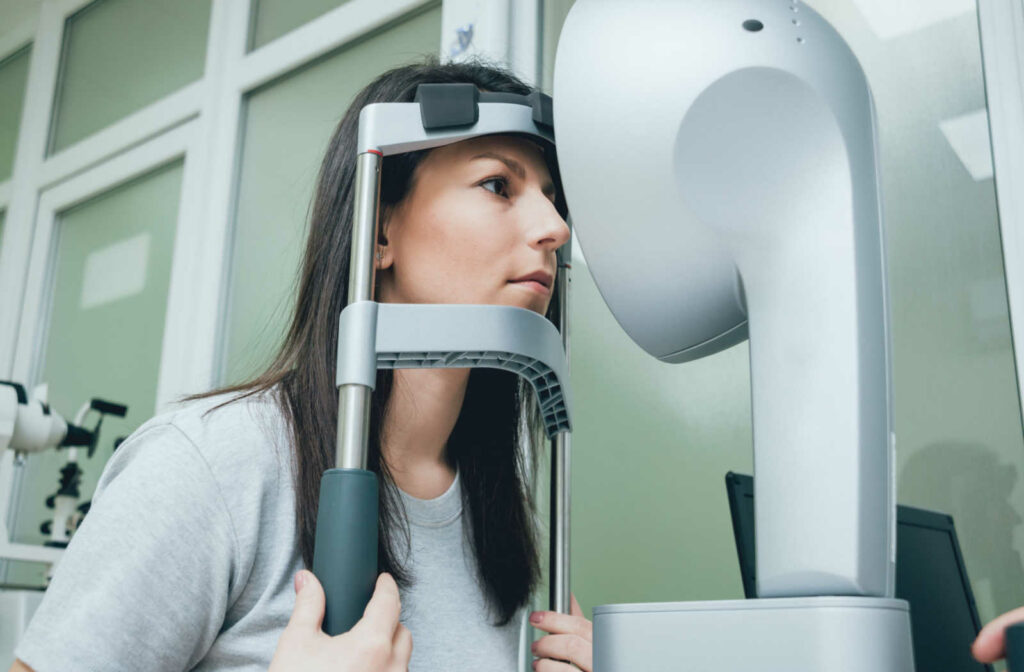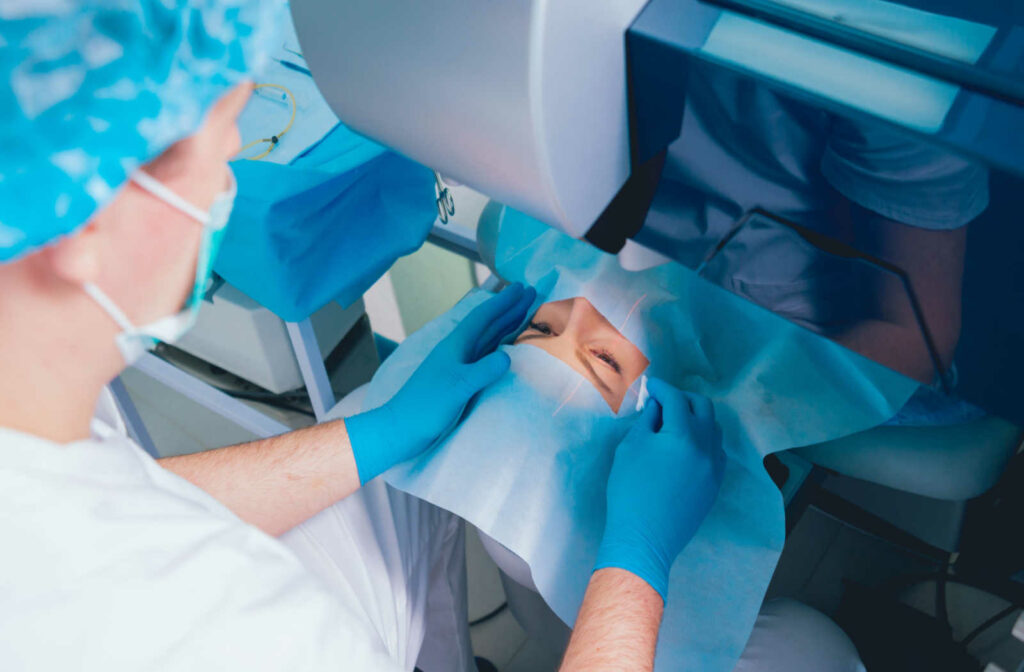Before LASIK
LASIK is likely the best-known type of refractive surgery. Patients who are good candidates for LASIK can experience freedom from glasses and contact lenses. However, before you can schedule your surgery, the first step is a LASIK consultation.
A consultation appointment is your chance to discover if you may benefit from LASIK or if an alternative is better for your eye health. It’s also an opportunity to learn what to expect during and after surgery. But what can you expect from a LASIK consultation?
About LASIK
LASIK (laser-assisted in-situ keratomileusis) is a refractive surgery that uses a laser to correct or improve vision problems caused by refractive errors. After LASIK, about 90% of patients achieve between 20/20 to 20/40 vision. The 20/40 is notable, as most US states require a minimum of 20/40 (with or without prescription lenses) to acquire a driver’s license.
While LASIK has many advantages for vision correction, there are potential risks. Therefore, the eye surgeon (ophthalmologist) must verify if the patient is a good candidate before performing the surgery.
General Guidelines for Good Candidates
- A LASIK procedure typically lasts 30 minutes. Patients must be capable of focusing on a target light or laser during the procedure.
- Patients are administered numbing eye drops; therefore, a patient must be able to tolerate the side effects. For example, some patients can experience an allergic reaction, which is why numbing eye drops are commonly tested during a consultation.
- Patients with thin corneas are poor candidates for LASIK. During a LASIK procedure, a small flap is cut in the cornea surface, allowing a laser to reach the cornea tissue underneath. LASIK cannot be performed safely when there isn’t enough tissue to create the flap.
If your eye doctor determines your cornea is too thin for LASIK, they may recommend an alternative vision correction surgery. Common refractive surgery alternatives include PRK (photorefractive keratectomy), RLE (refractive lens exchange), or phakic IOL implants.
During Your Consultation
A LASIK consultation can take 2–3 hours. Therefore, patients should avoid scheduling anything immediately after their appointment. Additionally, pupil dilation is typically required for testing, and side effects can last between 4–6 hours. As dilating eye drops can cause blurry vision, patients should arrange a ride and avoid driving after their consultation.
There are 2 main parts of a LASIK consultation: a comprehensive eye exam and a discussion of the surgery. First, assessing your eye health, vision, and cornea thickness is essential for determining if a patient is a good candidate for LASIK. Then, your eye doctor will explain the surgery procedure and what to expect.

Consultation Examinations
An eye doctor bases their assessment of candidacy on a few measurable factors. Typically, an examination during a LASIK consultation will include:
- Comprehensive eye exam
- Cornea measurements
- Refractive error assessment
- Tear film evaluation
Comprehensive Eye Exam
A comprehensive eye exam is a thorough assessment of your general eye health, from eye function to an inspection of eye structures. While it does involve visual acuity, it also includes testing for visual skills, such as depth perception, eye coordination, or visual-motor integration.
Comprehensive eye exams are recommended at least every 2 years for adults to help patients monitor their vision and eye health. The exam is part of the consultation as up-to-date evaluations are necessary to determine if your eyes are healthy enough to benefit from LASIK.
Corneal Topography
One common step when diagnosing your candidacy is corneal topography. A corneal topographer is an instrument used to create a 3D, color-coded cornea map. To be considered a good candidate, a patient must have generally healthy eyes, including a certain amount of corneal thickness.
The cornea is the transparent front surface of the eye, covering the pupil (the eye’s opening) and the iris (colored part of the eye). A refractive error occurs when the cornea is abnormally shaped. As a result, light can’t effectively reach the retina, causing blurred vision.
Examples of refractive errors LASIK can typically correct include:
- Astigmatism: the cornea is irregularly shaped
- Myopia (nearsightedness): the cornea is too steeply curved
- Hyperopia (farsightedness): the cornea has too little curvature
Tear Film Evaluation
The tear film consists of 3 layers essential to nourishing and protecting the eye’s surface. A patient’s tear film is evaluated to prevent dry eye.
Many patients experience dry eye after LASIK, with 50% experiencing it within a week after the procedure. However, that number decreases, falling between 20–40% after 6 months. Patients with dry eye before LASIK have an increased risk of developing more severe symptoms.
A Note About Contact Lenses
If you wear contact lenses, please ask about the minimum time patients must remove their lenses before a consultation. Contact lenses can affect the cornea’s surface, changing the curvature and interfering with accurate measurements.
Wearing soft contact lenses typically results in minor cornea changes. Patients may be required to remove their soft contacts 12 hours before their consultation.
Rigid gas permeable (RGP) can have a more significant impact, typically requiring removal at least one week before a consultation. However, your eye doctor will provide individual advice on when to remove your RGP lenses before your appointment.
Book Your Consultation
A LASIK consultation is the first step on your journey to clearer vision. When considering vision correction, discussing your options with your eye care provider can help answer your questions. Schedule an appointment at Charles Korth Optometry to see if you’re a good candidate for LASIK.




